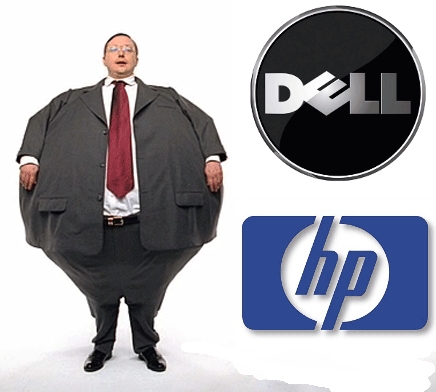PC OEMs: Please Cut the Crap!

Buying a new PC from one of the Tier 1 OEMs can often be a frustrating exercise in crapware removal.
My Tuesday morning started like this. Phone rings. 9AM.
Hey Jason, uh, it's Christine. Javi just booted up the laptop at the store this morning and nothing is working. Can you stop on by?
Me: Sure!
I knew, of course, that this probably involved my entire day being completely shot to hell.
Click on the "Read the rest of this entry" link below for more.
I arrive at Christine's business, Picnic Caterers, to find the company's laptop, a 2002-era Toshiba Pentium 4 with 512MB of RAM and Windows XP, so stuffed up with spyware, viruses and fragmented up the whazoo that it wasn't worth saving.
In addition to general Internet access, the computer was used primarily for QuickBooks for Invoicing and for posting the company's Daily Specialspage through Yahoo Web Hosting, so fortunately I didn't have much data that needed rescuing -- I copied off all of their pertinent Office and QuickBooks files and gave Christine the bad news.
So I went out to where I knew I could get a good deal on a computer -- my big box discount club of choice, COSTCO.
As it turns out, COSTCO had a great deal on a 15" Dell Studio, with Core Duo processor, 4GB of RAM, a 500GB hard drive, Wireless-N, DVD recorder and built-in webcam for $699.00. As COSTCO throws in an additional year of warranty, this seemed like a no-brainer, so I grabbed one right up.
I brought the laptop home, unboxed it, and powered it up. Vista Home Premium 64-bit with SP1 comes up. The initial startup process is absolutely agonizingly slow. I can't blame this one on Vista -- it's all the crapware Dell loads onto the system, including a 30-day trial of McAfee Security Suite (oh yeah, that's really gonna help when it times out in a month) some stupid Mac OS X-style icon bar and about a dozen other programs and useless games and garbage cluttering up the system.
So in addition to about 2 hours of waiting for all the Post-SP1 Vista patches to download, installing a new copy of QuickBooks 2009 ($200, Ka-Ching!) importing/converting her QBW journal file and then bringing the system up to SP2 with additional hotfixes, I then proceed to remove crapware software from the computer and make sure the system is secure for daily use. First, I yank McAfee and replace it with a copy of Avast! Free, along with Advanced SystemCare 3and Spybot Search & Destroy-- my standard triumvirate of PC prophylaxis.
The uninstalls and reboots take HOURS. I use another tool, CCleaner, to turn off programs in Startup that aren't frequently needed. By the time I am done, It's 8PM.
Why oh why do things have to be this way? Is there a reason for all this unnecessary software that comes with a new system? If Dell, HP, Acer and other PC OEMs are doing this for additional income from the crapware software vendors, by all means, can't they just distribute this awful stuff on a supplementary DVD or provide an icon with a simple app that downloads the entitled garbage if the user really wants it? And do we really need all these enhanced button bars and junk that just eat up more memory and slow the system down?
In my opinion, the OS build on a brand new retail purchased PC should not deviate tremendously from a retail DVD virgin install of Windows. It should have the requisite driver support for the new PC hardware, so that everything "works" out of the box but other than that, I really don't see the value in crippleware and crapware that the end-user is going to have to spend hours removing.
Dell and other OEMs would be much better off with a single icon that provides a remote managed software deployment utility which provides the customer with a list of free and commercial security suites, driver updates and utilities they can choose to purchase or download after unboxing, not unlike the App Store on the iPhone. Lenovo does this to some extent with their ThinkVantage System Update utility, which I think is a good implementation and approach, although their systems aren't entirely crapware-free either.
What's your feeling about crapware on fresh OEM PCs? Talk Back and Let Me Know.
